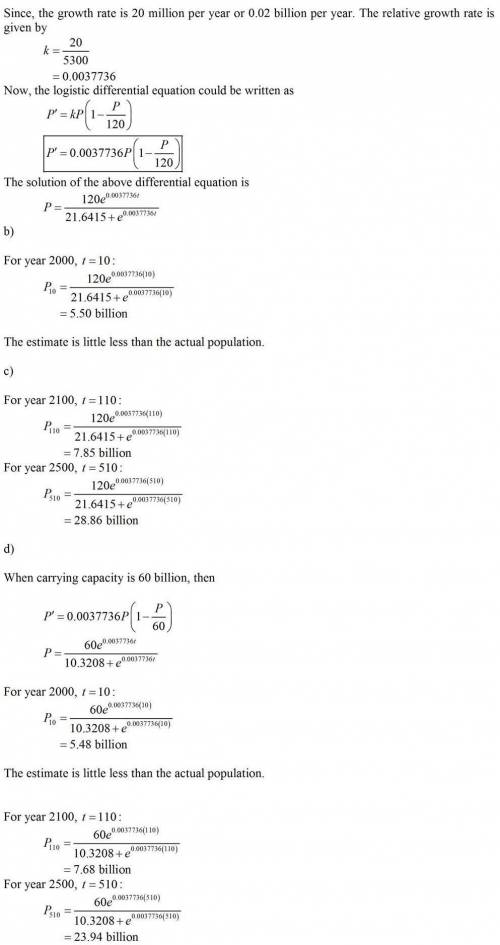
Mathematics, 06.05.2020 08:24 omoaye
The population of the world was about 5.3 billion in 1990. Birth rates in the 1990s ranged from 35 to 40 million per year and death rates ranged from 15 to 20 million per year. Let's assume that the carrying capacity for world population is 100 billion. (Assume that the difference in birth and death rates is 20 million/year = 0.02 billion/year.)
Required:
a. Write the logistic differential equation for these data. (Because the initial population is small compared to the carrying capacity, you can take k to be an estimate of the initial relative growth rate.)
b. Use the logistic model to estimate the world population in the year 2000. (Round the answer to two decimal places.)
c. Compare with the actual population of 6.1 billion. (Round the answer to one decimal place.) The difference is:
d. Use the logistic model to predict the world population in the years 2100 and 2500. (Round the answer to two decimal places.)

Answers: 2


Other questions on the subject: Mathematics

Mathematics, 21.06.2019 13:00, Kennedy3449
1. what are the missing reasons in the proof 2. it's in the second picture and 3
Answers: 1



Mathematics, 21.06.2019 22:30, rubycarbajal
The area of a circle is equal to 1 dm². find the radius of the circle.
Answers: 1
You know the right answer?
The population of the world was about 5.3 billion in 1990. Birth rates in the 1990s ranged from 35 t...
Questions in other subjects:


Physics, 02.03.2021 01:20


Mathematics, 02.03.2021 01:20

Mathematics, 02.03.2021 01:20

Health, 02.03.2021 01:20


Biology, 02.03.2021 01:20

English, 02.03.2021 01:20




